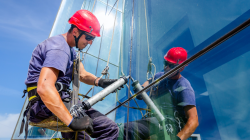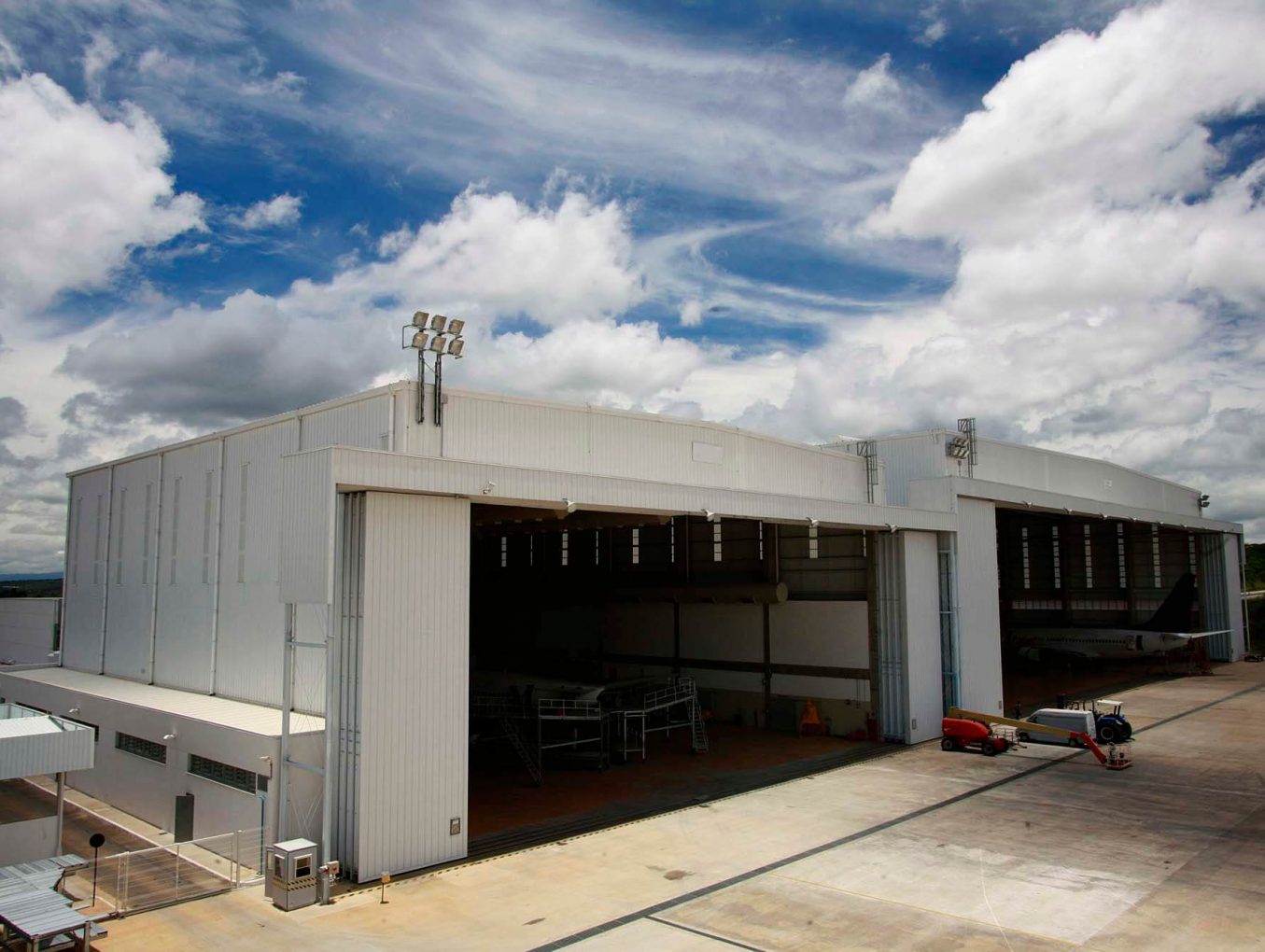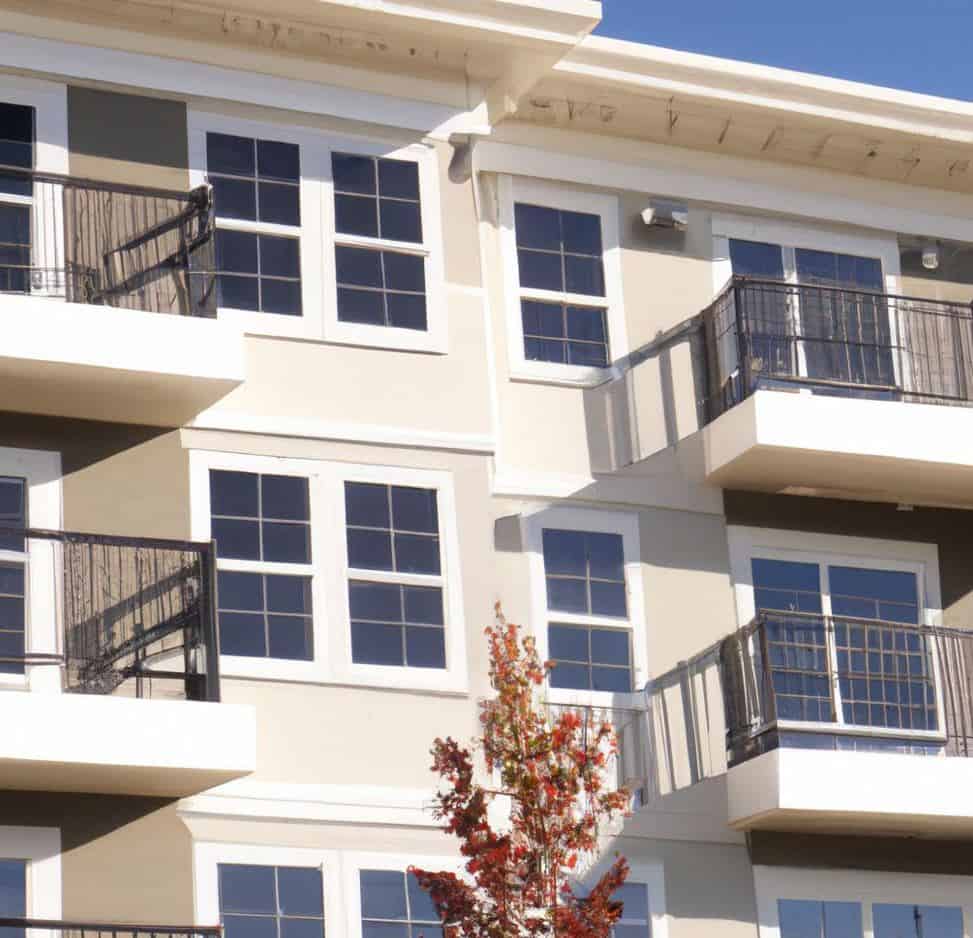A Guide to Restoration and Innovation: Safeguarding Our Architectural Heritage
Up for a challenge? Fancy mastering a specialized repair process for old buildings? If so, keep reading to find out about EIFS repair! Learn how you can tackle the challenge!
Understanding the Essence of EIFS in Historic Structures
EIFS is a vital piece of facade systems in historic structures. Its role in exterior insulation and beautifying these buildings is ever-important. Grasping the importance of EIFS and how it’s used in old buildings is key for successful repairs and upkeep. This means having a full understanding of the basics of EIFS and integrating it with the architectural parts of the structure for an effortless restoration process.
When it comes to repairing and protecting EIFS in old structures, one must comprehend its relevance in the context of such unique buildings. Taking into account their historical meaning, style, and design elements is paramount. Knowing how EIFS works with the other components of these buildings helps experts carry out repairs that are both structurally stable and visually pleasing.
Furthermore, each historical building has its own set of troubles when it comes to EIFS repair. Age, earlier renovations, and exposure to the environment must be taken into account. By studying these distinctive details, professionals can modify their strategy to address exact issues related to moisture infiltration, substrate damage, or surface deterioration.
Pro Tip: When doing EIFS repair on old buildings, it is wise to consult with preservation specialists or conservation experts who have experience working with ancient structures. Their invaluable knowledge can help navigate the intricacies involved in protecting the authenticity and wholeness of these precious architectural marvels. Fixing EIFS in historic buildings is not an easy feat, but the result is worth it.
Assessing the Unique Challenges of EIFS Repair in Antiquated Buildings
Anticipating the Unique Trials of EIFS Repair in Enduring Structures.
EIFS repairs: a place where safeguarding history and battling time go hand-in-hand. And still, somehow, avoiding the appearance of a disastrous DIY mission!
Matching Traditional Aesthetics: Tools and Techniques
To get the desired look when fixing EIFS in historic buildings, it’s essential to use tools and techniques that match traditional aesthetics. This means considering materials, textures, and colors to blend the new EIFS with the existing structure.
To help, here’s a table of tools and techniques for matching traditional aesthetics in EIFS repair:
| Tools | Techniques |
|---|---|
| Color samples | Custom color mixing |
| Stucco trowels | Texturing techniques |
| Architectural molds | Decorative elements |
| Paint brushes | Faux finishes |
It’s not just about the tools, though. Attention to detail and expertise are key to getting the right visual appeal and texture matching. Skilled artisans can recreate intricate designs with molds and use advanced texturing techniques to blend repaired areas with surrounding surfaces.
When restoring EIFS in historic buildings, make sure to consider unique details like decorative elements from the era or style. This helps match the aesthetics, but also preserves the building’s historical integrity.
For example, when restoring a historic courthouse recently, the team paid attention to every detail to match the original facade. They used custom-made molds and craftsmanship to replicate cornices, moldings, and carvings. The result was a successful restoration that kept the building’s historic charm while ensuring its long-term durability. Now that’s thorough!
The Importance of Properly Inspecting EIFS in Aged Buildings
Evaluating EIFS in aged buildings requires a thorough inspection. Historic EIFS presents unique challenges. So, it’s essential to carry out a comprehensive structural assessment and maintenance inspections. Doing this will help spot possible issues quickly and keep the precious structures safe.
Assembling the right components for EIFS repair is like putting together a puzzle! But at the end, you’ll get a perfect historic building!
Materials and Methods: Selecting the Right Components for Repair
The task of choosing the right repair materials and restoration methods for EIFS components in historic buildings can be daunting. It is paramount to select components that give structural stability as well as maintain the building’s historical features.
For guidance, here are some elements to think about:
- Repair Materials: Different repair materials may be necessary depending on the part being fixed. For instance, when repairing broken EIFS insulation, it is critical to find a substitution material that has the same texture and color. In addition, when fixing EIFS finish coats, using something with similar properties and aesthetics is necessary.
- Restoration Methods: The techniques utilized for restoring EIFS components in old buildings ought to be cautiously selected to guarantee lasting results. This could include techniques like surface preparation, adhesive application, reinforcement placement, and proper curing. Every step must be done precisely to get the best outcome.
By taking these factors into account and researching suitable repair materials and restoration methods, professionals can surmount the challenges of EIFS repair in historic buildings.
In addition to these considerations, it is essential to work with experienced contractors who have an in-depth knowledge of historic preservation and EIFS repair. Their knowledge can be very beneficial in bringing the project to a successful conclusion while preserving the building’s historic value.
Furthermore, keeping updated with new advancements in EIFS repair technologies can also improve the overall restoration process. For instance, advancements in adhesives or insulation materials may provide more efficient and effective solutions for historic building repairs.
Considering these various aspects will lead to successful results in repairing EIFS components in historic buildings while safeguarding their architectural significance.
Energy Efficiency Considerations in EIFS Restoration
EIFS Restoration for Historic Buildings: Improving Energy Efficiency
To maximize energy efficiency in EIFS restoration, high-quality insulation materials must be selected. Eco-friendly options reduce heat loss and lower heating/cooling costs. Also, air sealing measures are useful for preventing drafts.
Natural lighting is often overlooked, but it’s extremely beneficial! Windows and skylights reduce reliance on artificial lighting and save energy. Plus, they look great and make the area more comfortable.
Regular maintenance is key to energy efficiency. Inspections and repairs prevent energy waste. Advanced EIFS technologies, such as exterior foam insulation panels, can also provide energy-saving benefits.
With the right considerations, EIFS restoration in historic buildings can be sustainable. You can maintain the historical integrity, minimize the environmental impact, and achieve long-term financial savings.
Water Damage and EIFS: Solutions for Historic Buildings
Water infiltration and moisture control are key when fixing EIFS in historic buildings. Managing water intrusion is important to preserve these structures. Installing a vapor barrier and using mesh reinforcement are effective EIFS waterproofing techniques. Regular inspections and maintenance can help find issues early on.
Using breathable coatings in old buildings helps with evaporation, while protecting against water intrusion. This lets the building “breathe,” avoiding moisture buildup behind the EIFS system.
Fix any cracks or gaps promptly by using sealants or fillers designed for EIFS systems. Clean and maintain regularly to remove debris that could cause water entrapment.
Incorporate moisture management into building design. This includes proper landscaping, gutters and downspouts to control runoff. Minimizing water contact with EIFS reduces the risk of damage.
Integrating Modern Standards with Traditional Design in EIFS Repair
Cutting-edge advancements and timeless aesthetics merging in EIFS restoration bring new possibilities for historic buildings. Mixing modern tech with traditional design ensures a harmonious, seamless integration of EIFS in historic renovation projects. Striking the perfect balance lets us keep the unique charm and historic significance of these buildings while enjoying the advantages of modern systems.
In EIFS repair, conventional architecture principles uniting with contemporary standards enable an easy transition from old to new. Incorporating elements of traditional design into modern EIFS techniques produces a cohesive, authentic look. This way, repaired areas blend seamlessly with original sections. This preserves historic integrity and reinforces structural stability.
To get the immense benefits of combining modern standards with traditional design in EIFS repair, professionals need to stay informed about industry developments. Advances in materials, techniques and equipment let them execute detailed repairs matching the unique attributes of each building. Integrating state-of-the-art methodologies with meticulous craftsmanship guarantees successful restoration and preservation of these architectural treasures.
Staying up-to-date on technology and respecting tradition ensures historic buildings stand proudly for generations. Navigating building codes for EIFS repair can be like trying to find your way through a maze blindfolded – you’ll either end up with a masterpiece or a disaster.
Compliance and Regulations: Navigating Building Codes for EIFS Repair
Regulatory Compliance: A Dance with EIFS Repair for Building Codes
Comprehending building codes and regulations is key when completing EIFS repair projects. Keeping to the standards set by regulatory bodies guarantees safety and quality when it comes to historic preservation.
This table offers an overview of the key building codes related to EIFS repair. It lists the particular regulations that must be taken into account, making sure that the restoration process follows all the necessary standards.
Key Regulations for EIFS Repair:
| Building Code | Regulation |
|---|---|
| Fire Safety | Fire-resistant materials usage |
| Structural | Load-bearing capacity assessment |
| Moisture Control | Waterproofing & drainage guidelines |
| Energy Efficiency | Insulation & thermal performance standards |
These regulations are essential, but local codes and regional requirements must also be considered. Knowing such specifications will ensure full compliance with all relevant building laws.
In practice, meeting building codes for EIFS repair can be tricky. A team of contractors experienced this firsthand when they worked on a historical building. Even though they had the right compliance knowledge, they faced unforeseen issues due to a change in regulation demands. So, they had to adjust their repair method to fit the amended guidelines, demonstrating how important it is to stay up-to-date with building codes for successful project execution.
Preserving history while avoiding future damage is a delicate dance, like trying to sport a fedora without messing up your vintage hairstyle.
Preventing Future Damage: Proactive Measures for EIFS in Historic Buildings
To preserve historic buildings with Exterior Insulation and Finish Systems (EIFS), proactive measures must be taken. These steps not only safeguard the structure, but also maintain its historical value.
To ensure this, there are three key steps to follow:
- Regular inspection – Check for cracks, water infiltration, and other issues that could reduce system performance.
- Meticulous repairs – Have professionals with expertise in EIFS maintenance repair any damage found.
- Appropriate maintenance – Clean, seal joints, and address issues quickly to prevent further damage.
These actions are not just about protecting the building. They also honor the cultural heritage inside these structures.
In 1937, an ancient castle revealed decay due to moisture ingress. This showed the importance of preventive measures. Finding the right repair contractor for EIFS is difficult. It’s like finding a needle in a haystack, except the haystack is made of crumbling stucco!
Working with Professionals: Selecting a Skilled EIFS Repair Contractor
Choosing the perfect EIFS repair contractor for historic buildings is an important task. Here are six points to consider:
- Look for experience in EIFS repair, specifically with historic buildings.
- Ensure they know the ins and outs of EIFS systems and installation methods.
- Opt for pros who understand historic building requirements.
- Select a contractor known for attention to detail.
- Good communication is key to understanding your vision.
- Ask for referrals and testimonials.
Selecting the right EIFS repair contractor for historic buildings requires more thought than other construction projects. Competent professionals must have expertise in both EIFS systems and historical structures.
The renovation of historic buildings are great examples of the importance of choosing an experienced contractor. An inexperienced team can cause irreversible damage to the façade. But skilled EIFS specialists will masterfully repair and restore the historic structures.
When picking a reliable EIFS repair contractor for historical buildings, take into account their proficiency in both EIFS systems and historical building restoration. Use past examples for guidance and you’ll be able to confidently engage professionals to preserve our valuable architectural heritage.
Innovations and Future Trends in Historic Building EIFS Repair
The realm of historic EIFS repair is changing. Pros strive to master this art, navigating a complex landscape of tailor-made repair techniques. Advances in restoration address existing challenges and help preserve our architectural heritage.
A focus on eco-friendly materials and practices is emerging. This shift towards sustainability aligns with wider trends in construction. It presents an opportunity to create a lasting impact on both aesthetics and durability. Cutting-edge tech such as 3D scanning and modeling can support precise repairs, blending seamlessly with original elements.
Experts advise a holistic approach for successful EIFS restoration. Thorough documentation, analysis, and planning ensure decisions align with the building’s historic significance, while addressing any structural vulnerabilities. Traditional craftsmanship and modern tools can achieve a balance between preservation and advancement.
Cost Considerations: Budgeting for EIFS Repair in Heritage Buildings
Cost Estimation for EIFS Repair in Historic Structures: Budget Planning.
Repairing historic buildings is like performing surgery. If a mistake is made, there’s no CPR for crumbling bricks and mortar.
It’s essential to plan a budget for restoring EIFS (Exterior Insulation and Finish System). This will help ensure that repair expenses match financial constraints and unique needs of the structure.
Here’s a breakdown of cost considerations when budgeting for EIFS repair in heritage buildings:
| Cost Component | Description |
|---|---|
| Material Cost | $XX,XXX |
| Labor Cost | $XX,XXX |
| Project Size | $XX,XXX |
These components are essential when allocating funds for EIFS repairs. Evaluating these factors and estimating costs accurately will help the project run smoothly and stay within financial boundaries.
Understanding cost considerations is key to budgeting for EIFS repair in heritage buildings. This helps to restore architectural marvels while preserving their historical significance.
Safety Measures and Precautions During the Repair Process
Safety Protocols and Precautions for Worker Safety During Historic EIFS Restoration are a must! Follow these guidelines:
- Wear helmets, gloves, and safety glasses.
- Implement fall protection measures, like scaffolding and harnesses.
- Inspect tools, equipment, and materials regularly.
- Train workers on hazardous materials and machinery.
Prioritize worker safety – it’s not just a legal obligation, but a moral responsibility. Don’t let EIFS repairs haunt you in historic buildings – mastering the art of preservation is a spook-tacular challenge!
Maintaining EIFS in Historic Buildings: A Long-Term Perspective
EIFS maintenance for historic buildings is a must. To ensure their longevity, keeping up with repair and maintenance is a priority.
When facing the unique issues of these structures, a perspective beyond short-term fixes is needed. Taking into account their significance and value, special techniques and materials must be used to maintain the building’s character.
Honouring the past of these buildings requires understanding. Skilled artisans familiar with traditional building methods should be used to recreate original elements.
In repairing EIFS on historic buildings, we have a responsibility to preserve their physical structure and spirit. Through expertise, we can meet this challenge and keep these iconic landmarks alive for generations.
Frequently Asked Questions
FAQ 1:
Question: What is EIFS repair?
Answer: EIFS repair refers to the process of fixing and restoring the Exterior Insulation and Finish System (EIFS) on a building. It involves repairing any damages, cracks, or deterioration in the EIFS material to ensure its proper functioning and maintain the aesthetics of the building.
FAQ 2:
Question: Why is mastering EIFS repair important for historic buildings?
Answer: Historic buildings often feature EIFS as a part of their architectural design. To preserve the authenticity and integrity of these buildings, it is crucial to master EIFS repair techniques specifically for historic structures. This ensures that repairs are done using appropriate materials and methods that respect the building’s original design and construction.
FAQ 3:
Question: What are the challenges of mastering EIFS repair in historic buildings?
Answer: Some challenges include limited availability of original materials, difficulty in matching the existing EIFS texture, complying with historic preservation guidelines, and working with delicate structures that may require additional care during the repair process.
FAQ 4:
Question: Can any contractor perform EIFS repair in historic buildings?
Answer: Not every contractor is equipped with the necessary expertise and knowledge to handle EIFS repair in historic buildings. It is essential to hire professionals experienced in working with historic structures and familiar with the specific requirements of EIFS repair in these buildings.
FAQ 5:
Question: How long does EIFS repair in a historic building usually take?
Answer: The duration of EIFS repair in a historic building depends on various factors, such as the extent of the damage, the size of the building, and the availability of resources. On average, it may take several weeks to a few months to complete EIFS repair in a historic structure.
FAQ 6:
Question: Are there any regulations or permits required for EIFS repair in historic buildings?
Answer: Depending on the location and specific regulations, permits may be required for EIFS repair in historic buildings. It is essential to consult with local historic preservation authorities and comply with any applicable guidelines or restrictions before initiating the repair process.
Contact us or Call (765) 341-6020 for a Free EIFS Estimate





